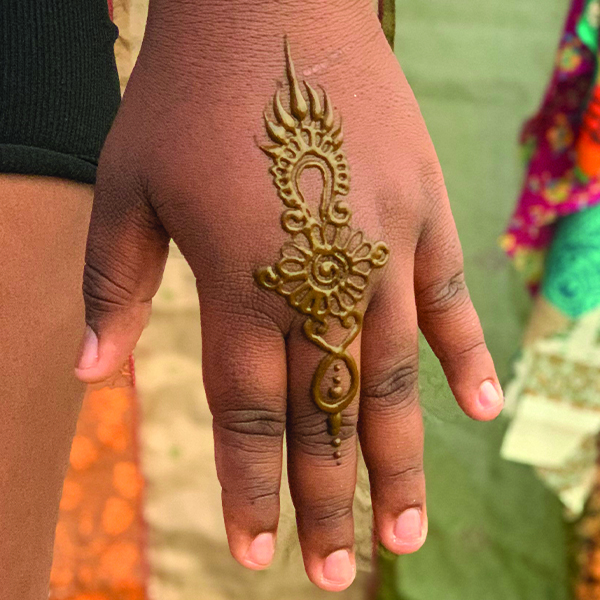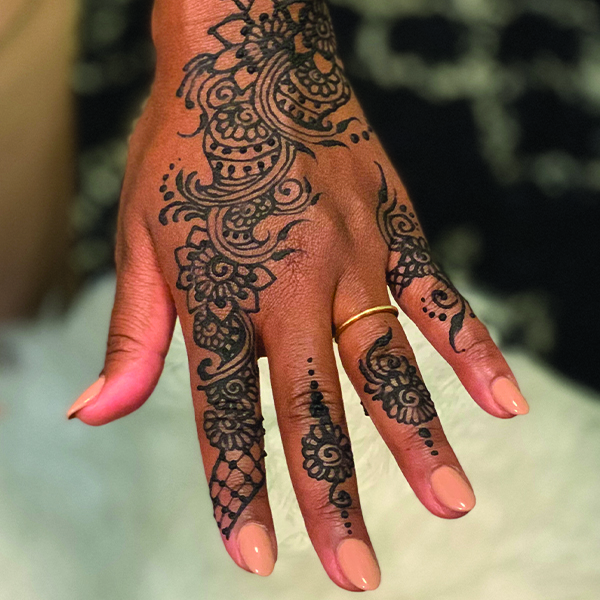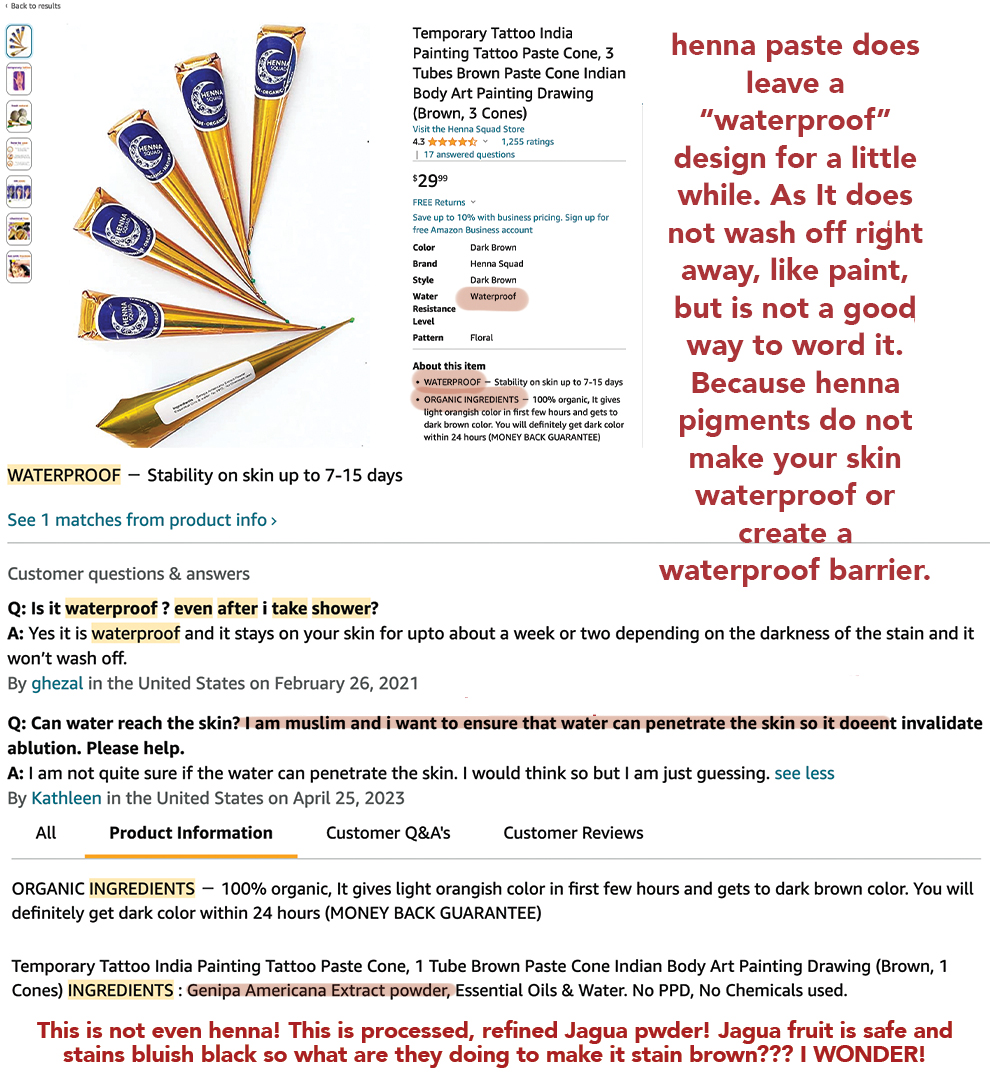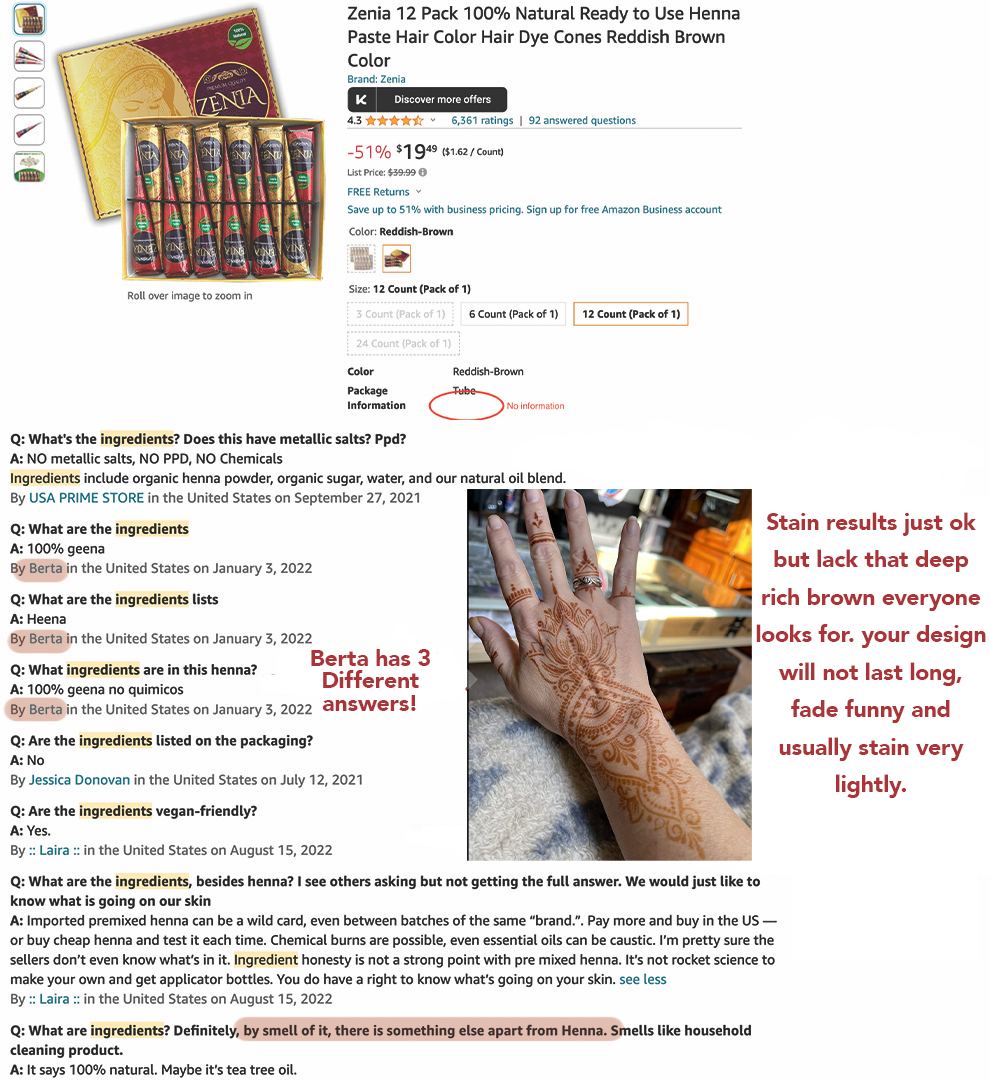Thank You for Choosing Natural Henna
I hope to see you soon
Thank You for choosing natural henna
I hope to see you soon


The small motif in an earthy-colored paste is an example of henna and The inky back floral strip is an example of Jagua
The inky back floral strip is an example of Jagua, and the small motif in an earthy-colored paste is an example of henna.
A Very Nerdy Deep Dive Into Real Natural Henna
Henna paste (made from a leaf) and Jagua gel (made from a fruit) are awesome because both leave beautiful deep stains without harmful components that can burn the skin and cause severe reactions or aging. Most mass-produced body art cones claim to be brown, red, natural, or black "henna," but they are not, and are very dangerous!
Whatever you bought on Amazon or the store shelf is not real henna! Here's why.
Cones that are sold online never have clear s ingredient lists and many are full of parabens, preservatives, and my favorite, natural mystery ingredients. While research is still being done on parabens specifically, it is known that all parabens have been banned in the UK, along with artificial food dyes. With my own research, I personally identified parabens in these body art cones that have conclusive data backing a direct correlation to skin damage under the right conditions. If an individual has a body art product that includes these certain parabens on the skin and is exposed to UVB, skin damage can occur in just one use. The side effects of additional parabens included in these cones are still being studied to reach evidence of causation.
An artist's homemade Natural Henna vs. questionable "Natural Henna"
Fresh henna can be made of very few safe ingredients, and is not shelf stable at all, it needs to be kept frozen when not being used even with lemon juice. If your "henna" does not require frozen storage you can bet there are unlisted preservatives. ingredient lists in mass-produced body art cones may say, "natural ingredients/oils" qctually causing worse issues. Ingredients that are naturally derived, no matter how many steps away from their original compound, companies are not obligated by the FDA to inform you what they are. There are many natural and "naturally derived" ingredients that have mystery concoctions and intensities of oils, acids, and chemicals that can be extremely irritating to the skin, causing damage. For example, clove or peppermint oil can be very irritating or even burn the skin, if not diluted correctly in a carrier oil. Poison ivy is all-natural, it too is a leaf. Do we do well with that on our skin? Nope! Natural does not mean safe, and it actually leaves you more in the dark than ever!
Every trusted henna artist that makes or sources their own henna paste has carefully chosen the most delicate ingredients for their clientele and should have the ability to inform you of their ingredient list.
Do your own research and find a few sources to help you come to your own informed and finalized conclusions, but let me start the process for you. Below are two well-rated Amazon products tried by many individuals. A snapshot of issues for each product is highlighted, and the original source is linked below.

VIEW AMAZON LISTING
In very rare cases, one can learn they have unique allergies to the oils used in even the most gentle natural henna paste after they have gotten henna. The signs come fast. You will almost immediately feel itching and a bit of growing spicy discomfort if ignored. This sensation is easily stopped by rinsing with soap and water. If not, call a doctor, as an extremely rare case of a stronger allergic reaction may occur. After your henna is removed, start with deductive reasoning, followed by statistics. Every henna artist uses different ingredients. If your henna was by Mada Mehndi, you can rule out the most common reason for a reaction, lemon juice. It is a popular choice for many henna artists. Keep it in mind if you visit another artist. So you are left with Two options for your reaction: first, the cajaput oil, and lastly, lavender oil. Many henna artists make allergy-friendly batches with fewer or different oils or no lemon juice. Mada Mehndi almost always has two separate batches available, lavender only and cajeput only. If your reaction was mild, they would be happy to see you return to try their other blend.

